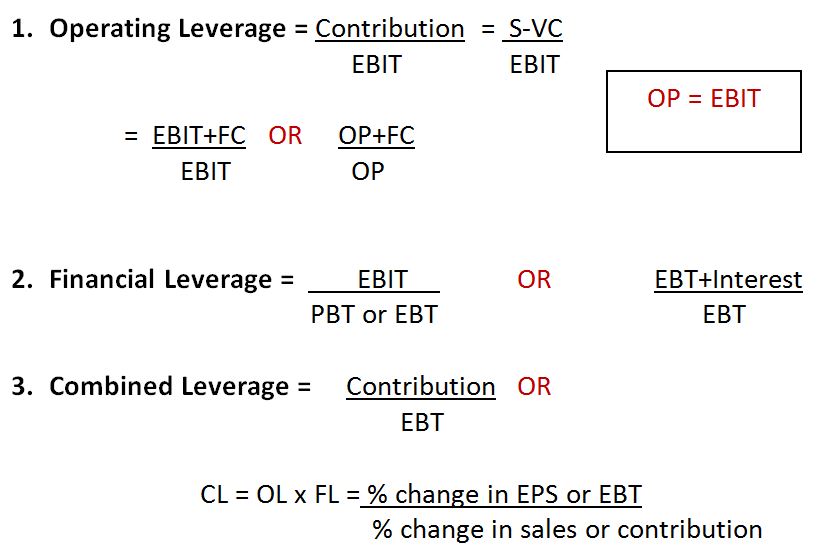وبلاگ
How Operating Leverage Can Impact a Business
For example, for an operating leverage factor equal to 5, it means that if sales increase by 10%, EBIT will increase by 50%. After calculating the leverage by applying the formula, if the result is equal to 1, then the operating leverage indicates that there are no fixed costs, and the total cost is variable in nature. In fact, the relationship between sales revenue and EBIT is referred to as operating leverage because when the sales level increases or decreases, EBIT also changes. On the other hand, if the case toggle is flipped to the “Downside” selection, revenue declines by 10% each year, and we can see just how impactful the fixed cost structure can be on a company’s margins. Revenue and variable costs are both impacted by the change in units sold since all three metrics are correlated.
Create a Free Account and Ask Any Financial Question
The enterprise invests in fixed assets aiming for the volume to produce revenues that cover all fixed and variable costs. The DOL is calculated by dividing the contribution margin by the operating margin. For example, the DOL in Year 2 comes out 2.3x after dividing 22.5% (the change in operating income from Year 1 to Year 2) by 10.0% (the change in revenue from Year 1 to Year 2).
Operating Leverage: Meaning, Formulas, and Example Calculations
Companies with a low DOL have a higher proportion of variable costs that depend on the number of unit sales for the specific period while having fewer fixed costs each month. Operating leverage is the ratio of a business’s fixed costs to its variable costs. This ratio is often used when forecasting sales and determining appropriate prices. Operating margins are the basis of determining the profitability of companies. The numerator in NOPAT (net operating profit at taxes) that we use to calculate ROIC (return on invested capital) tells us how efficiently the company reinvests its assets to grow revenues.
Our Services
Managers use operating leverage to calculate a firm’s breakeven point and estimate the effectiveness of pricing structure. An effective pricing structure can lead to higher economic gains because the firm can essentially control demand by offering a better product at a lower price. If the firm generates adequate sales volumes, fixed costs are covered, thereby leading to a profit. If fixed costs are higher in proportion to variable costs, a company will generate a high operating leverage ratio and the firm will generate a larger profit from each incremental sale. A larger proportion of variable costs, on the other hand, will generate a low operating leverage ratio and the firm will generate a smaller profit from each incremental sale. In other words, high fixed costs means a higher leverage ratio that turn into higher profits as sales increase.
What is your current financial priority?
Therefore, high operating leverage is not inherently good or bad for companies. Instead, the decisive factor of whether a company should pursue a high or low degree of operating leverage (DOL) structure comes down to the risk tolerance of the investor or operator. In the final section, we’ll go through an example projection of a company with a high fixed cost structure and calculate the DOL using the 1st formula from earlier.
- However, the downside case is where we can see the negative side of high DOL, as the operating margin fell from 50% to 10% due to the decrease in units sold.
- This is the financial use of the ratio, but it can be extended to managerial decision-making.
- With over 75% fixed costs and labor occupying the highest cost, when the parks were shuttered during Covid, they lost huge, but the parks will see growing profitability as they reopen.
- During the 1990s, investors marveled at the nature of its software business.
Conversely, retail stores tend to have low fixed costs and large variable costs, especially for merchandise. Because retailers sell a large volume of items and pay upfront for each unit sold, COGS increases as sales increase. By contrast, a retailer such as Walmart demonstrates relatively low operating leverage.
Not all corporations use both operating and financial leverage, but this formula can be used if they do. A firm with a relatively high level of combined leverage is seen as riskier than a firm with less combined leverage because high leverage means more fixed costs to the firm. The higher the degree of operating leverage (DOL), the more sensitive a company’s earnings before interest and taxes (EBIT) are to changes in sales, assuming all other variables remain constant.
For the particular case of the financial one, our handy return of invested capital calculator can measure its influence on the business returns. For information pertaining to the registration status of 11 Financial, please contact the state securities regulators for those states in which 11 Financial maintains a registration filing. Companies with high DOLs have the potential to earn more profits on each incremental sale as the business scales. Later on, the vast majority of expenses are going to be maintenance-related credit purchase definition importance and pros and cons (i.e., replacements and minor updates) because the core infrastructure has already been set up. We saw this with airlines during COVID-19 and the travel restrictions that took effect in 2020; many airlines had to be bailed out due to greatly reduced ticket sales and their low Cash balances and poor liquidity ratios. However, you could use this formula if you assume that the company’s Operating Expenses are its Fixed Costs and that its Cost of Goods Sold or Cost of Services are all Variable Costs.
After its fixed development costs were recovered, each additional sale was almost pure profit. DOL measures how sales changes affect operating income, while financial leverage measures the impact of debt on earnings per share. In most cases, you will have the percentage change of sales and EBIT directly. The company usually provides those values on the quarterly and yearly earnings calls. Basically, you can just put the indicated percentage in our degree of operating leverage calculator, even while the presenter is still talking, and voilà. However, companies that need to spend a lot of money on property, plant, machinery, and distribution channels, cannot easily control consumer demand.
Actually, it can mean that the business is deteriorating or going through a bad economic cycle like the one from the 2nd quarter of 2020. At the end of the day, operating leverage can tell managers, investors, creditors, and analysts how risky a company may be. Although a high DOL can be beneficial to the firm, often, firms with high DOL can be vulnerable to business cyclicality and changing macroeconomic conditions. But this comes out to only a $9mm increase in variable costs whereas revenue grew by $93mm ($200mm to $293mm) in the same time frame. In addition, in this scenario, the selling price per unit is set to $50.00, and the cost per unit is $20.00, which comes out to a contribution margin of $300mm in the base case (and 60% margin). If all goes as planned, the initial investment will be earned back eventually, and what remains is a high-margin company with recurring revenue.
But when companies experience downturns, such as in March 2020, many will have the ability to reduce both fixed and variable costs in response. For example, a DOL of 2 means that if sales increase (decrease) by 50%, operating income is expected to increase (decrease) by twice, i.e., 100%. Although you need to be careful when looking at operating leverage, it can tell you a lot about a company and its future profitability, and the level of risk it offers to investors. While operating leverage doesn’t tell the whole story, it certainly can help. High operating leverage means that small changes in sales can lead to significant changes in operating income. This can be beneficial when sales are increasing but risky when sales are declining.




